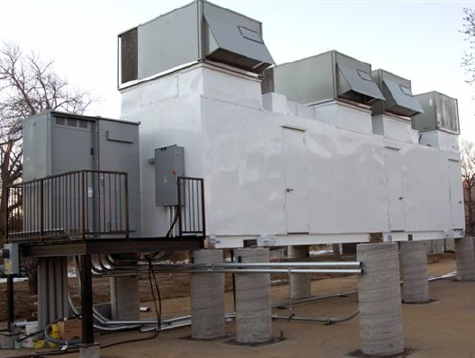Inside a Microsoft data center

It takes mucho computes and terabytes to create the 3D models used in Microsoft's Virtual Earth online mapping service. So how do they cram 5,000 cores and 10,000 terabytes - 10 petabytes - of storage into 3 40 ft. shipping containers?
Containerized data centers Sun pioneered containerized data centers with their 2006 water-cooled Project Blackbox. But the Microsoft model is air-cooled and in production today in Boulder, CO.
Here's the exterior:

It's what's inside that computes Putting ~3400 disk drives and 1700 cores into 320 sq. ft. isn't easy, which is what makes this picture so interesting:
Unlike Google's barebones racks, these racks are labeled Verari. Turns out that Verari Systems builds containerized data centers that look familiar:
They also build high density storage and servers with very efficient cooling. They get 24 3.5" disks and up to 4 quad-core processors into 3 rack units - where most rackmount systems require 4U with half the cores.
Here's their high-density storage blade:
The Storage Bits take While I was skeptical at first, I'm now convinced that containerized data centers are the most economical and energy efficient alternative. Microsoft even bought wind-generated power for these units to underscore the point.
With the rapid growth of computing and data for science, commerce and entertainment we need to do it as efficiently as possible.
Comments welcome, of course.